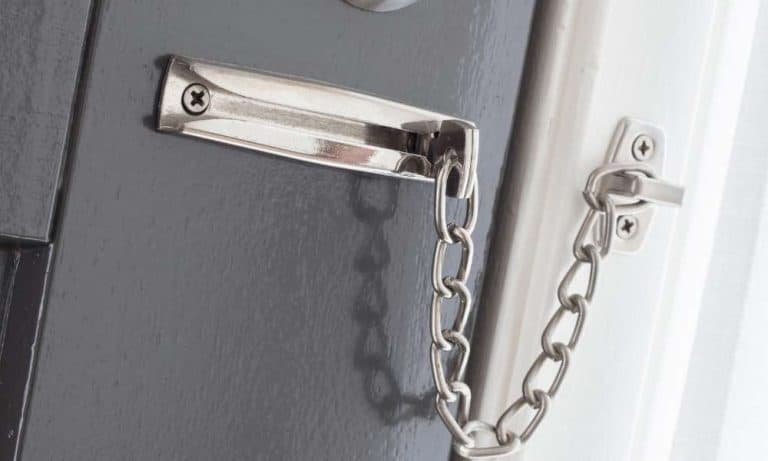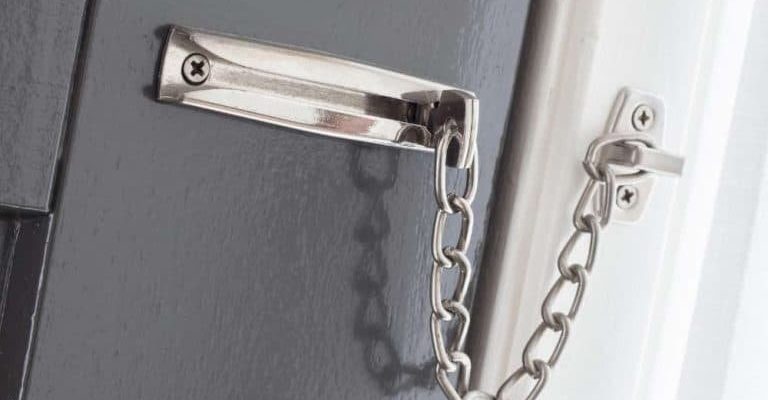
Installing one isn’t as complicated as it sounds! Most door restrictors are straightforward and can be done with a few tools you probably have lying around the house. The whole process can take about 30 minutes, depending on how handy you are. You might even find yourself enjoying the DIY aspect. Let’s jump into what you need and how to get it done!
What Is a Door Restrictor or Chain?
A door restrictor or chain is a simple device that attaches to your door and its frame. It allows you to keep your door partially open while preventing it from swinging all the way open. Think of it like a safety net—it’s there to catch things before they go too far. These devices come in various styles, including door chains and restrictors that limit how far your door can open.
The main purpose? They add a layer of security and can also help keep your pets contained in the room or protect against unwanted access. If you live in a crowded area or have kids who are curious, this can be especially useful. You might even choose to install one on your front door for added safety!
Why Install a Door Restrictor or Chain?
You might be wondering why this is important. A door restrictor or chain can enhance your home’s security in several ways:
– Privacy: It allows you to slightly open your door while maintaining some privacy. You can talk with someone without fully opening it.
– Safety for Kids & Pets: If you have young children or pets, it prevents them from darting out of the room unexpectedly.
– Control Airflow: It can help with ventilation; you can let in fresh air while keeping your door secure.
By adding this small device to your door, you gain better control over who comes in and out, which can be a game-changer for many households.
Tools and Materials You’ll Need
Before jumping into the installation process, it’s good to gather everything you’ll need first. There’s nothing worse than starting a project and realizing you’re missing a crucial tool! Here’s what you’ll typically need:
- Door restrictor or chain kit: These usually come with all necessary hardware.
- Drill: A power drill will make the job easier.
- Screwdriver: Both flat-head and Phillips head might be needed.
- Measuring tape: To ensure everything is aligned correctly.
- Level: Optional, but helpful to make sure it’s straight.
Getting everything you need in one place will help speed up the installation process and keep things organized.
Preparation: Measuring and Marking
Before you start drilling holes into your door, you want to prepare a bit. Positioning is crucial. Here’s how to do it right:
1. Decide on the Placement: Generally, door restrictors are placed about 1/3 of the way down from the top of your door. This ensures enough leverage for the restrictor to work effectively.
2. Measure Carefully: Use your measuring tape to mark where you want to install the restrictor on the door and the frame. Make sure to double-check your measurements to avoid mistakes—you don’t want unnecessary holes!
3. Use a Level: To ensure the restrictor will sit straight, use a level to line it up. This will give you a clean, professional look once it’s all said and done.
Taking the time to measure and mark will save you headaches later. Trust me; it’s worth it!
Installation Steps for a Door Restrictor or Chain
Now that you’re all set up, let’s dig into the installation process. Here’s a simple guide to get you going:
1. Position the Restrictor or Chain: Align the restrictor device with the marks you’ve made. Make sure it’s even and level.
2. Drill Pilot Holes: Using your power drill, create pilot holes where you marked for the screws. This helps to prevent the wood from splitting when you insert the screws.
3. Attach the Restrictor/Chain: Secure the restrictor or chain to the door. You may need someone to hold the device in place while you screw it in. Use your screwdriver to tighten the screws fully—but not so tightly that you damage the material.
4. Attach the Other Side: Next, attach the other part of the restrictor to the door frame. Repeat the process of marking, drilling, and securing.
5. Test the Mechanism: After everything is in place, test how it works. Open and close the door a few times to make sure it functions correctly. Adjust if necessary.
With these simple steps, you’ll have a fully functional door restrictor or chain in no time.
Tips for Troubleshooting Common Issues
Even after a successful installation, you might run into some common problems. If that happens, here are a few tips to help you troubleshoot:
– If it’s not closing properly: Check to see if the restrictor is aligned correctly. Sometimes, a slight adjustment can make all the difference.
– If it feels too loose or too tight: You might need to tighten or loosen the screws slightly. You want it to be secure, but not overly tight.
– If the chain feels flimsy: Ensure you are using the right screws and hardware for your specific model. Sometimes, the original screws aren’t sufficient for heavier doors.
Staying patient and making small adjustments can usually clear up these issues!
Alternative Options for Door Security
If you’re considering security options, but a restrictor or chain doesn’t sound right for you, there are alternatives to think about:
– Security Door Stops: These sit at the bottom of the door and prevent it from opening fully, great for added security.
– Smart Door Sensors: These can alert you if the door opens, perfect for modern tech lovers.
– Traditional Locks: Sometimes, all you need is an upgrade to a better lock for peace of mind.
Each option has its pros and cons, so it’s essential to weigh your needs and preferences when deciding.
Installing a door restrictor or chain on your bedroom door is a simple yet effective way to enhance your home’s security. It adds peace of mind without breaking the bank or requiring professional help. With just a few tools and some patience, you can easily tackle this DIY project on your own.
Remember, safety is always worth investing time into. Whether you’re keeping unwanted visitors at bay or ensuring your little ones stay safe, every step you take counts. If you follow these steps, you’ll have a sturdy, reliable door restrictor or chain in no time—making your home a safer, more secure space.
